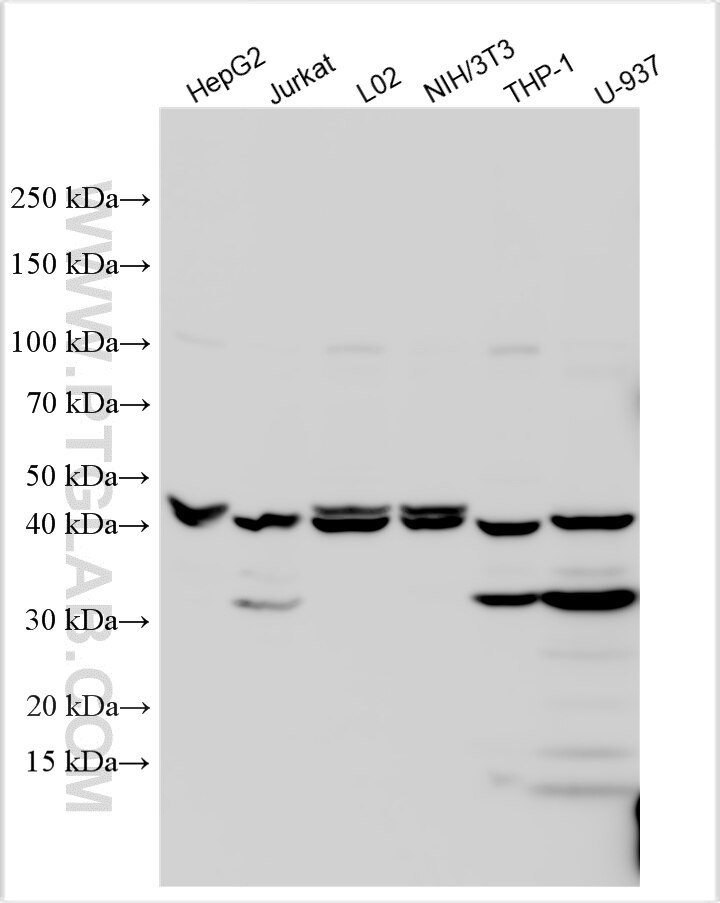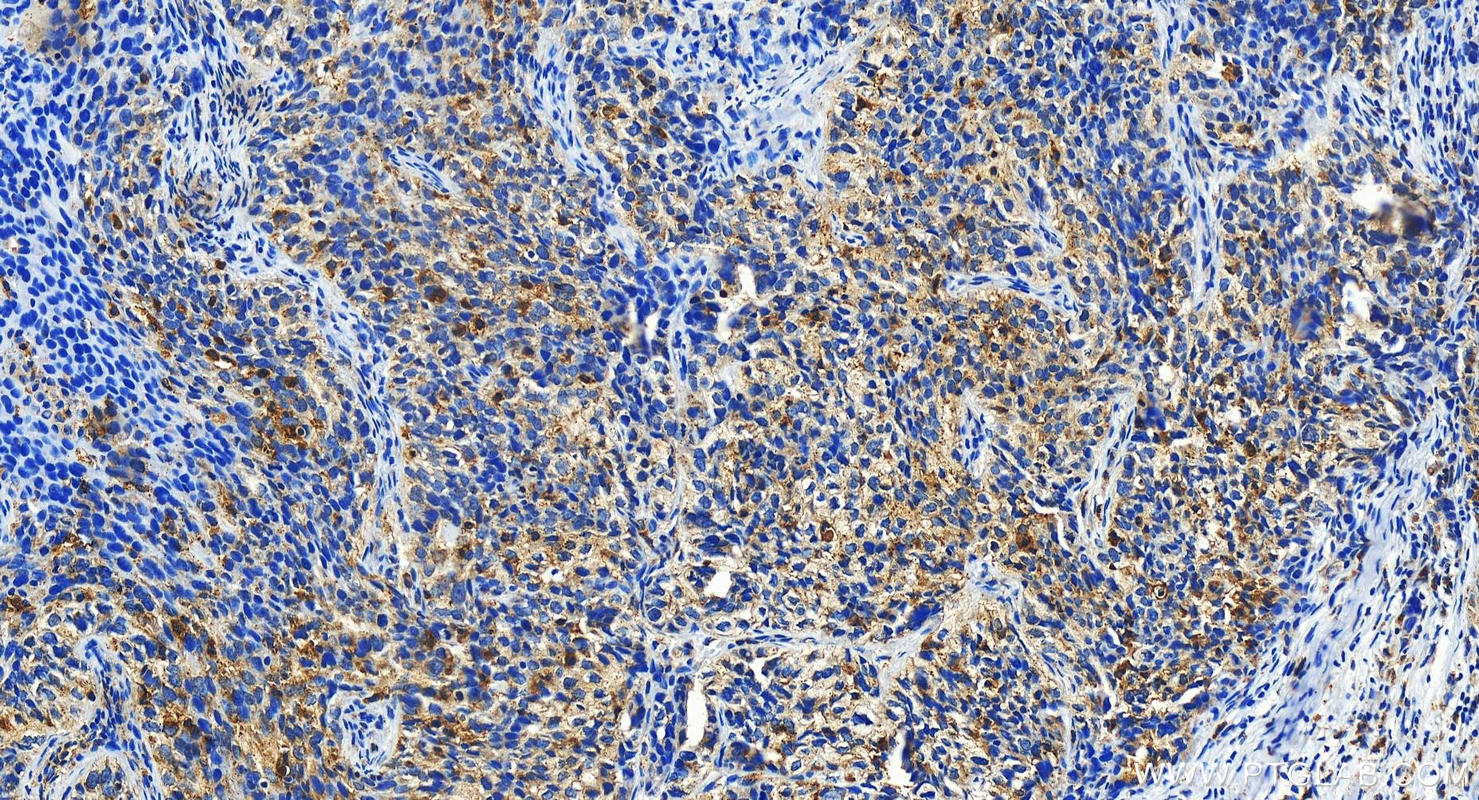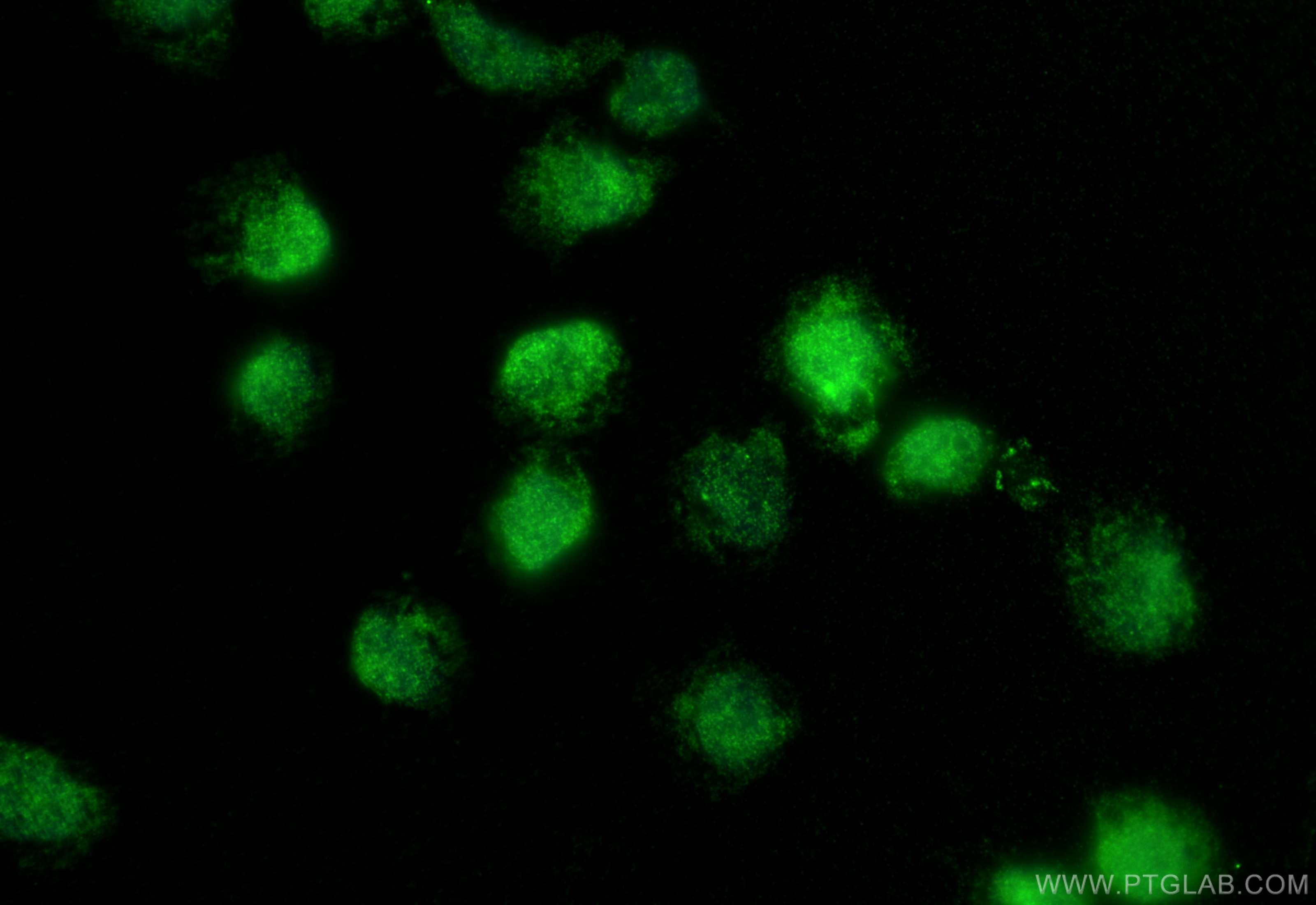- Phare
- Validé par KD/KO
Anticorps Polyclonal de lapin anti-LGALS9/Galectin-9
LGALS9/Galectin-9 Polyclonal Antibody for WB, IHC, IF/ICC, ELISA
Hôte / Isotype
Lapin / IgG
Réactivité testée
Humain
Applications
WB, IHC, IF/ICC, IP, ELISA
Conjugaison
Non conjugué
N° de cat : 17938-1-AP
Synonymes
Galerie de données de validation
Applications testées
| Résultats positifs en WB | cellules HepG2, cellules Jurkat, cellules L02, cellules NIH/3T3, cellules THP-1, cellules U-937 |
| Résultats positifs en IHC | human ovary cancer tissue, il est suggéré de démasquer l'antigène avec un tampon de TE buffer pH 9.0; (*) À défaut, 'le démasquage de l'antigène peut être 'effectué avec un tampon citrate pH 6,0. |
| Résultats positifs en IF/ICC | cellules U-937, |
Dilution recommandée
| Application | Dilution |
|---|---|
| Western Blot (WB) | WB : 1:1000-1:4000 |
| Immunohistochimie (IHC) | IHC : 1:50-1:500 |
| Immunofluorescence (IF)/ICC | IF/ICC : 1:50-1:500 |
| It is recommended that this reagent should be titrated in each testing system to obtain optimal results. | |
| Sample-dependent, check data in validation data gallery | |
Applications publiées
| KD/KO | See 1 publications below |
| WB | See 15 publications below |
| IHC | See 8 publications below |
| IF | See 1 publications below |
| IP | See 1 publications below |
Informations sur le produit
17938-1-AP cible LGALS9/Galectin-9 dans les applications de WB, IHC, IF/ICC, IP, ELISA et montre une réactivité avec des échantillons Humain
| Réactivité | Humain |
| Réactivité citée | Humain |
| Hôte / Isotype | Lapin / IgG |
| Clonalité | Polyclonal |
| Type | Anticorps |
| Immunogène | LGALS9/Galectin-9 Protéine recombinante Ag12209 |
| Nom complet | lectin, galactoside-binding, soluble, 9 |
| Masse moléculaire calculée | 323 aa, 36 kDa |
| Poids moléculaire observé | 34-40 kDa |
| Numéro d’acquisition GenBank | BC110340 |
| Symbole du gène | Galectin-9 |
| Identification du gène (NCBI) | 3965 |
| Conjugaison | Non conjugué |
| Forme | Liquide |
| Méthode de purification | Purification par affinité contre l'antigène |
| Tampon de stockage | PBS with 0.02% sodium azide and 50% glycerol |
| Conditions de stockage | Stocker à -20°C. Stable pendant un an après l'expédition. L'aliquotage n'est pas nécessaire pour le stockage à -20oC Les 20ul contiennent 0,1% de BSA. |
Informations générales
The galectins, formerly known as S-type lectins, are a family of β-galactoside-binding proteins implicated in modulating cell-cell and cell-matrix interactions. Galectin-9 (LGALS9) is a tandem repeat-type member of the galectin family. It has three isoforms (named galectin-9L, galectin-9M, and galectin-9S): long type of 355 amino acids, medium type of 323 amino acids, and short type of 311 amino acids. Galectin-9 is ubiquitously expressed in a variety of tissues, including lymph nodes and spleen, and overexpressed in Hodgkin disease tissue. It is involved in chemoattraction, apoptosis, and the regulation of cell differentiation and has anti-allergic effects. It has been reported that galectin-9 is a ligand for Tim-3, through which galectin-9 can induce T-helper type 1 lymphocyte (Th1) death.
Protocole
| Product Specific Protocols | |
|---|---|
| WB protocol for LGALS9/Galectin-9 antibody 17938-1-AP | Download protocol |
| IHC protocol for LGALS9/Galectin-9 antibody 17938-1-AP | Download protocol |
| IF protocol for LGALS9/Galectin-9 antibody 17938-1-AP | Download protocol |
| Standard Protocols | |
|---|---|
| Click here to view our Standard Protocols |
Publications
| Species | Application | Title |
|---|---|---|
Cell Rep Med Lnc-H19-derived protein shapes the immunosuppressive microenvironment of glioblastoma | ||
Front Mol Neurosci Galectin-9/Tim-3 pathway mediates dopaminergic neurodegeneration in MPTP-induced mouse model of Parkinson’s disease | ||
J Nutr Biochem Isothiocyanates attenuate immune checkpoint blockage therapy in gastric cancer via induction of PD-L1 expression | ||
Front Immunol Galectin-9/TIM-3 as a Key Regulator of Immune Response in Gliomas With Chromosome 1p/19q Codeletion. | ||
Stem Cell Res Ther Mesenchymal stem cells alleviate experimental autoimmune cholangitis through immunosuppression and cytoprotective function mediated by galectin-9. |




